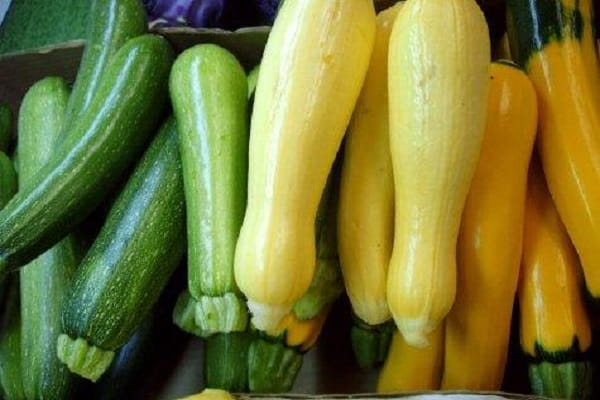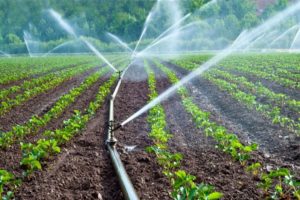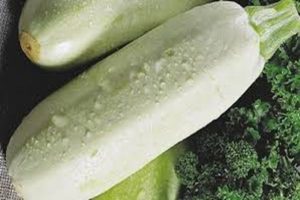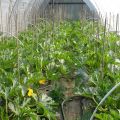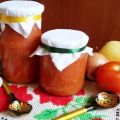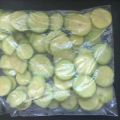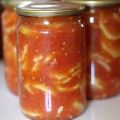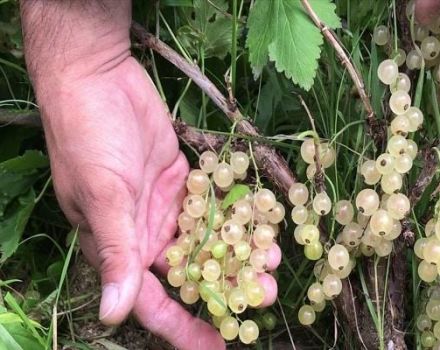Description of zucchini zucchini varieties, their cultivation, planting and care
Traditional white-fruited zucchini from the garden plots is being replaced by a not so long ago appeared variety - zucchini. Foreign and domestic breeders have made a lot of efforts to improve the usual zucchini, as a result of which a new species was developed. It differs not only in external data, but also in original taste.
History of appearance
America is considered the birthplace of zucchini. However, the pumpkin plant got its name in Italy. Until recently, only white zucchini were cultivated in Russia, therefore, with the advent of varieties with a dark peel, they were named zucchini. They were brought to Europe in the 16th century and were grown only in botanical gardens. Soon, the delicate taste of the fruit conquered the culinary experts, and various delicacies were prepared from them. But in the homeland of the vegetable, it was valued exclusively for its seeds.
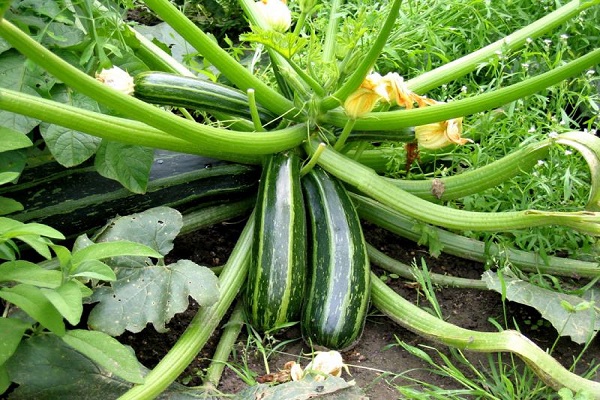
Description of zucchini
Zucchini have a number of distinctive features that distinguish them from ordinary zucchini in a separate form. Like any plant, they have advantages and disadvantages.
External characteristics
Compared to traditional cousins, zucchini leaves are more decorative, and the bush itself is more compact. On the site, they occupy less space, and are not inferior in yield. Also, this variety differs in other external signs:

- fruits are painted in bright colors (golden, dark green), striped varieties are found;
- the original shape of the fruit, represented not only by the classic elongated version, but also spherical;
- the leaves are cut with characteristic patterns, have a light green color.
Fruit sizes
Depending on the variety, the zucchini fruits have different sizes. They grow as long as a finger or in volume with a small ball, there are also classic versions about 20 cm long. Zucchini are not prone to overgrowth.
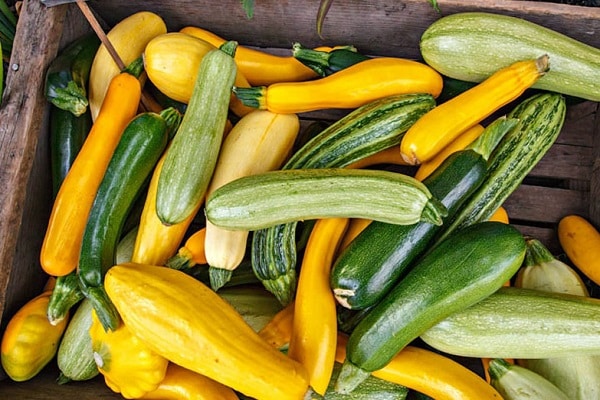
Taste qualities
Zucchini differs from zucchini in a more delicate taste, which makes it possible to eat them even raw. The low calorie content of fruits makes them indispensable in a variety of diets. The delicate pulp is used to prepare culinary masterpieces.Zucchini is used to prepare not only traditional dishes familiar to everyone, but also desserts and sauces.
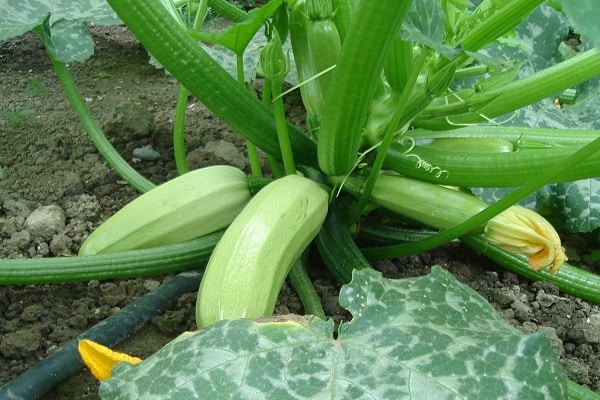
Skin
The zucchini skin contains a huge amount of magnesium and carotenes, due to which the metabolism of the human body is normalized. The peel on the fruit is very thin and delicate, so it can be eaten without any problems and not removed when preparing the zucchini for cooking. Despite this, zucchini tolerate transportation well and are able to maintain their marketability no worse than ordinary zucchini.
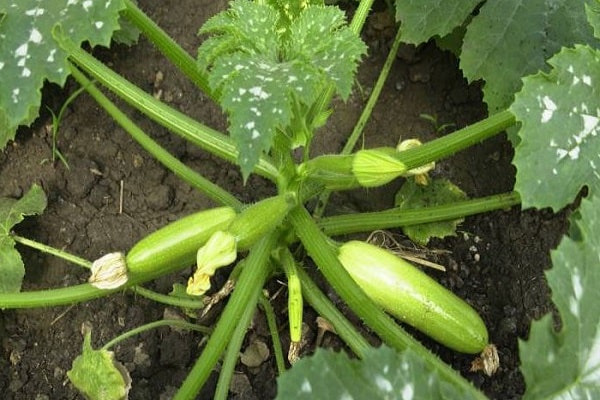
Sunflower seeds
The zucchini fruit contains few seeds. As a rule, zucchini is eaten young, and the seeds in them are not yet ripe. If you want to collect planting material for the next season, then leave a few fruits for full ripening. Seeds are collected from overripe zucchini for frying and eating. They taste no different from pumpkin seeds.
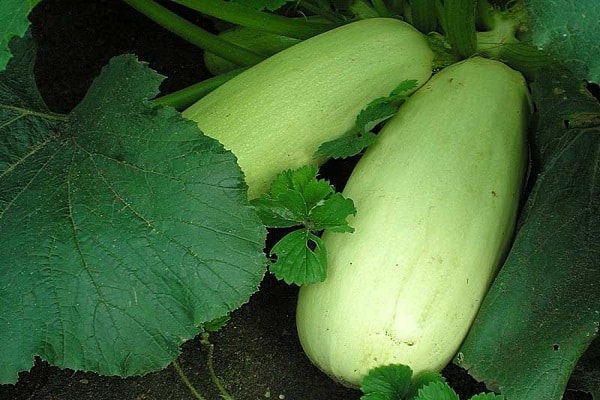
Advantages and disadvantages
Zucchini have a number of advantages over regular courgettes:
- high productivity;
- excellent taste;
- universal use of the crop;
- unpretentious care;
- low calorie content;
- thin skin and the ability to use unpeeled in cooking;
- the formation of a large number of female peduncles.
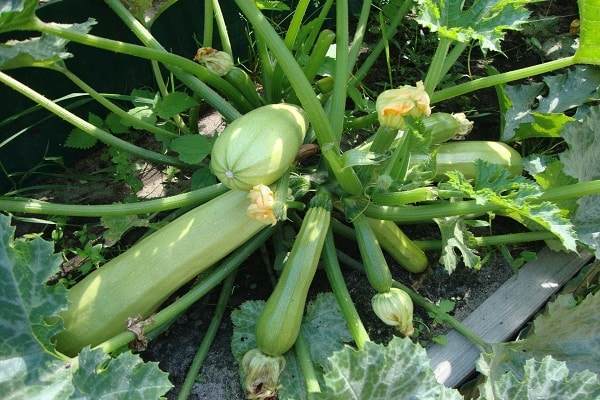
According to the reviews of gardeners, there were no significant shortcomings in these zucchini. Before planting plants in the garden, it is required to carry out a preliminary deoxidation of the soil. But this procedure is not complicated and does not take much time.
Zucchini varieties and hybrids
Not only foreign, but also domestic scientists worked on the development of new varieties and hybrids. From year to year, they improved the plants and added new qualities and characteristics to them.

Zolotinka
One of the very first varieties of zucchini with yellow fruits. High yield and excellent commercial qualities make it a favorite of many gardeners. The variety is early ripe, up to 15 fruits are harvested from one bush. The pulp is juicy and dense, similar to cucumber. The taste of Zolotinka is sweet and crispy.
The fruits are used for the preparation of baby food and all types of canning. They can be stored for a long time and not deteriorate, therefore they are grown on an industrial scale for commercial purposes. You can grow zucchini Zolotinka both in the open field and in a greenhouse.
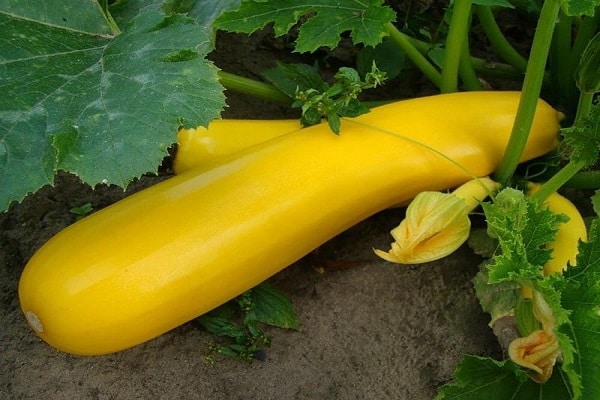
Zebra
An early ripening variety intended for cultivation in open and closed ground. The fruits are striped and cylindrical in shape. The pulp is colored white-yellow. The yield is very high. The variety is resistant to temperature extremes and changes in weather conditions. Zebra zucchini have universal application and are suitable for all types of preservation, blanks. They tolerate transportation well, are not prone to decay.
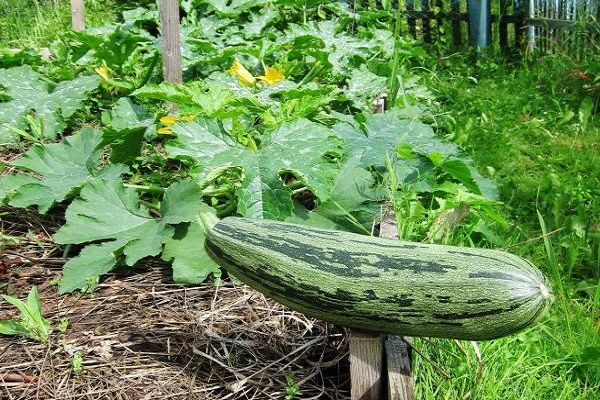
Aeronaut
The Aeronaut variety gained popularity due to the ability of its fruits to be stored for a long time and not lose freshness, as well as excellent taste. The first crop can be enjoyed less than 2 months after planting. Zucchini are colored dark green, the flesh is snow-white, very tender and juicy. The sugar content is low, making the zucchini suitable for diabetics.
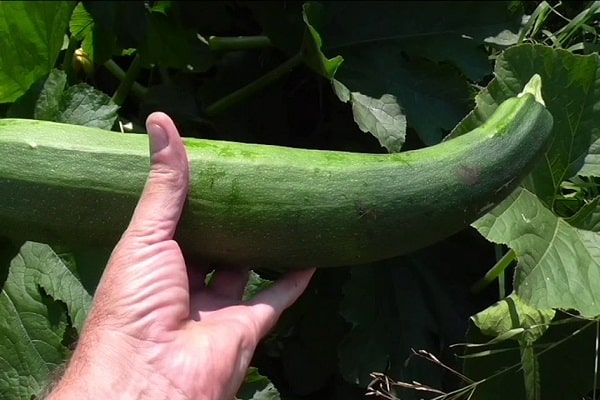
Black handsome
This zucchini has gained popularity due to its unpretentiousness, high yield and unusual appearance. The fruits are dark green, closer to black. The pulp is firm, without bitterness. The harvested crop can be stored for a long time and not lose its taste and marketability. You can use zucchini for the preparation of all types of preparations and preserves, as well as use it fresh in salads.
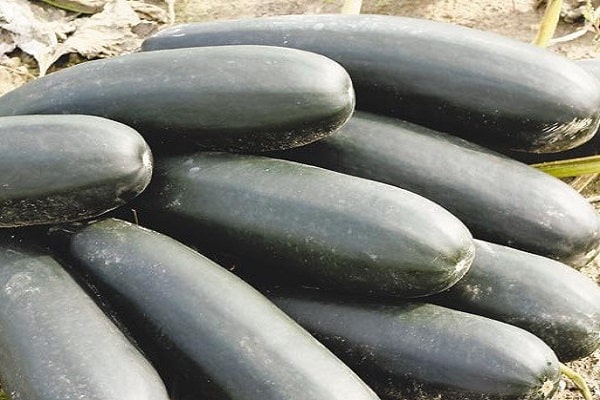
Negro
This variety is early maturing, forms flowers of a predominantly female type. The yield is very high, the fruits are cylindrical in shape. Zucchini are colored greenish-black with small white blotches. The skin is not very thin, which increases the shelf life.The pulp is green, tender and tasty. The use of zucchini is universal, it can be used to prepare any culinary masterpieces.
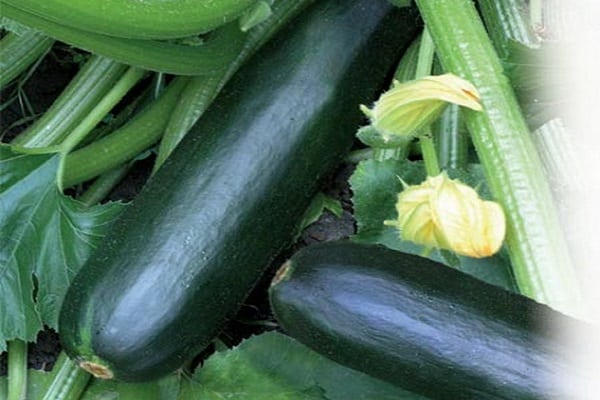
Tsukesha
This zucchini is suitable for growing in all regions of our country. The variety is unpretentious and does not require special attention when growing. Noteworthy due to its low calorie content and increased nutrient content. Tsukeshi fruits are used to prepare various culinary dishes, and are also used to prepare fresh salads.
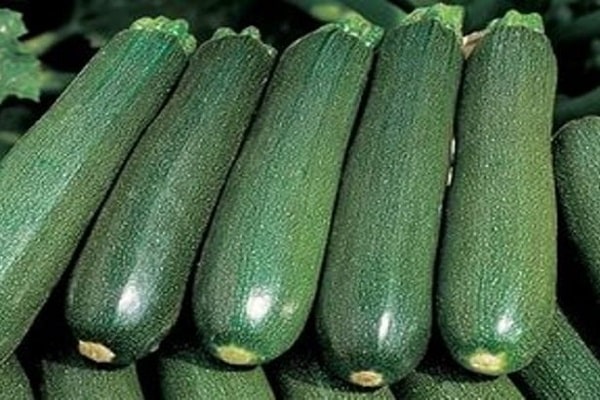
Diamond
This variety was bred in Germany. Shows resistance to both waterlogging of the soil and drought, without losing productivity. Fruits are dark green in color and light spotting. The pulp is white, dense. The taste is excellent. The crop is perfectly transported over long distances and has a universal purpose.
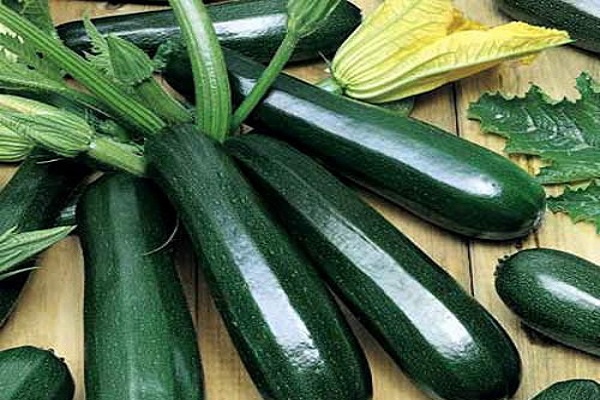
Yellow-fruited
The variety of domestic selection is suitable for growing in all regions of our country. Shows increased resistance to major diseases. The shape of the fruit is cylindrical, the color is yellow with an orange mesh. Creamy pulp with excellent taste. The fruits are high in vitamins and minerals. It is used in dietetic food.
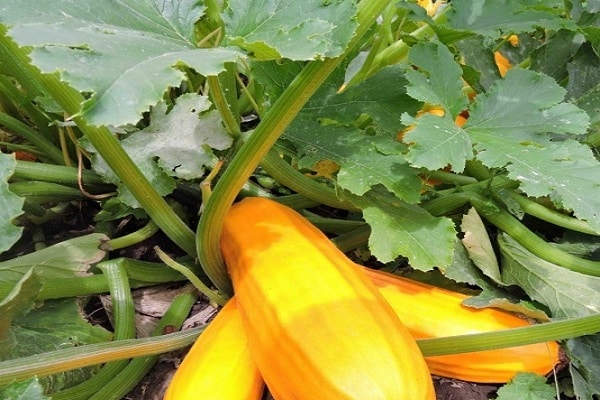
Nephritis
A bright representative of mid-season varieties with green fruits. Differs in a long fruiting period. Fruits for universal use with excellent taste characteristics. With proper care conditions, the crop can be harvested until late autumn.
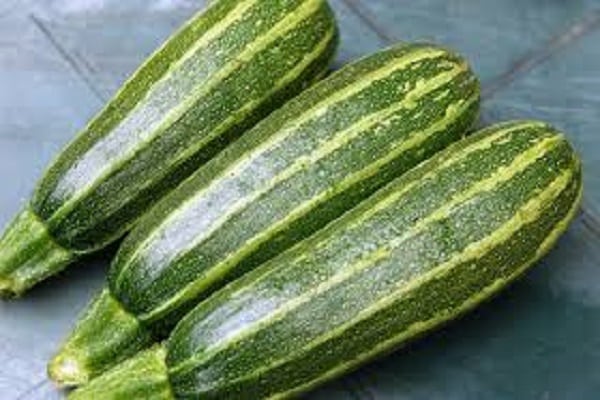
Skvorushka
Zucchini produces female-type flower stalks and is highly productive. The shape of the fruit is cylindrical, the ribbing is not pronounced. The color is dark green with barely noticeable white blotches. The pulp is white, juicy. Taste characteristics are excellent.
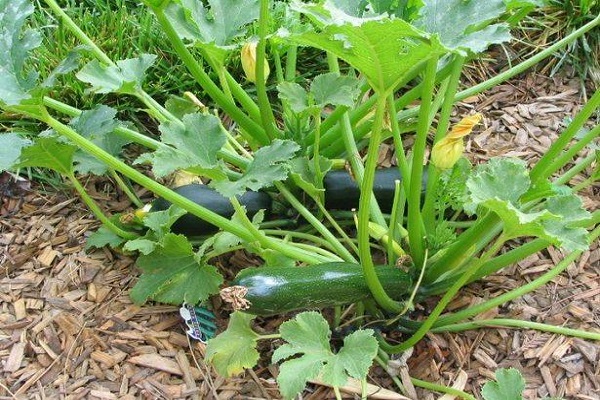
Pharaoh
Fruits of a dark green color, at the stage of biological ripeness, change their color to close to black. The pulp is yellow, tender, and the taste is sweet. Zucchini is characterized by increased cold resistance and resistance to major diseases. It is used to prepare any culinary masterpieces.
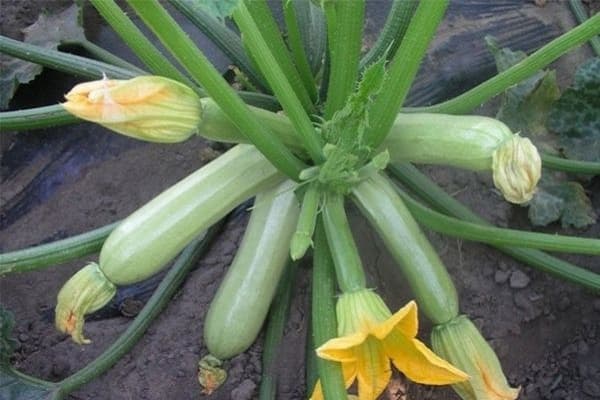
Banana
Super-yielding hybrid with early ripening. Cylindrical zucchini fruits with firm pulp are colored bright yellow. Shows increased resistance to the most common diseases. The fruits have universal application and can be used for the preparation of any dishes and preparations.
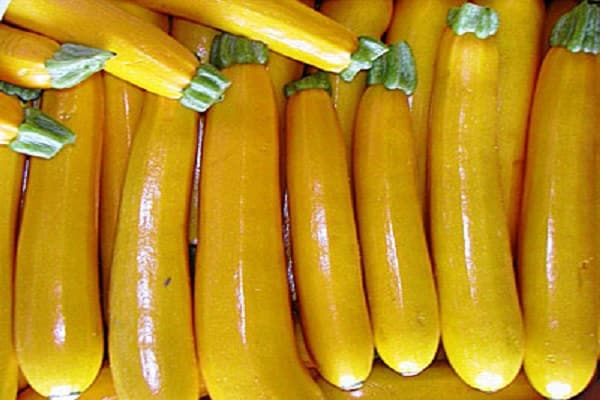
Ronda
This zucchini has a long fruiting period and a ball-like fruit. The zucchini are colored gray-green with vertical stripes, the flesh is juicy and firm. Suitable for pickling and winter harvesting.
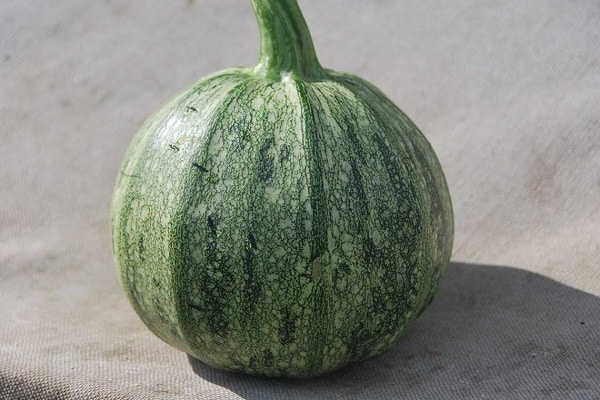
Tiger cub
The zucchini of this variety is most similar in appearance to a standard zucchini. However, it contains 2 times more carotene than carrots. Great for diet food. The fruits have a characteristic striped color.

Odessa-52
The fruit of this zucchini is cylindrical, milky white or greenish in color. The pulp is pinkish-yellow or yellowish. The variety is characterized by increased resistance to major diseases. The crop is suitable for all types of processing and fresh consumption.
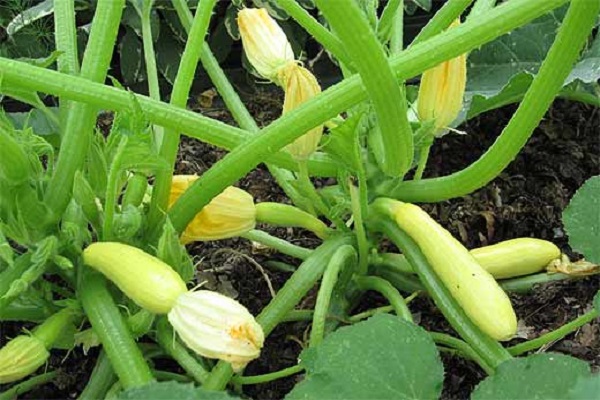
White
The name of the Bely variety speaks for itself. The fruits are white, the skin is thin and tender. Zucchini have a high yield and excellent taste. Resistant to major diseases, unpretentious in care, tolerate temperature changes well.
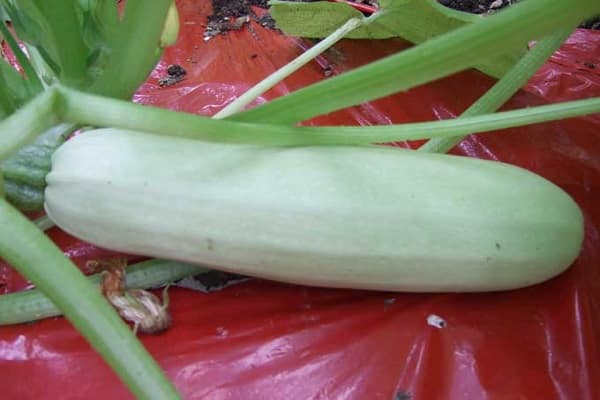
Sosnovsky
Zucchini Sosnovsky are distinguished by their increased resistance to major diseases and abundant yield. The fruits are white or cream colored, the flesh is creamy and tender. Zucchini have a universal purpose and can be used for any kind of processing.
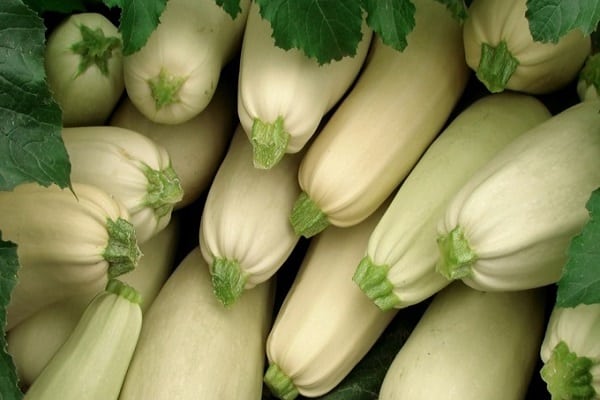
Anchor
Zucchini of this variety are resistant to short-term temperature changes.The variety is distinguished by long-term fruiting and pleases with the harvest until the first frost. The anchor shows increased drought resistance, which makes it suitable for cultivation in summer cottages, the owners of which can devote the garden only weekends.
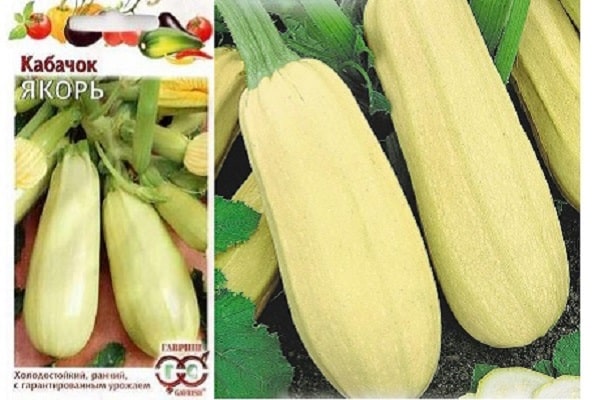
Growing and caring for zucchini
Care and cultivation of zucchini differs little from similar procedures for ordinary zucchini or pumpkin. Plants are undemanding and do not need special attention, but they are thankful for their care with a bountiful harvest.
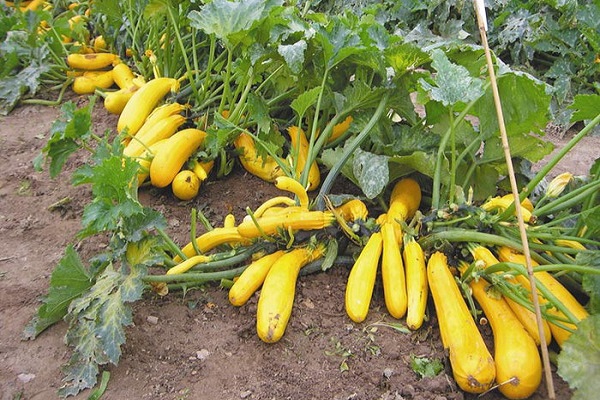
Soil preparation
The soil for the zucchini is prepared in the fall. The site is carefully dug up and organic or mineral fertilizers are applied. Wood ash is added to deoxidize the soil. Be sure to follow the rules of crop rotation. Immediately before planting the plants, the garden bed is dug up again, disinfected and, if necessary, add fertilizers.
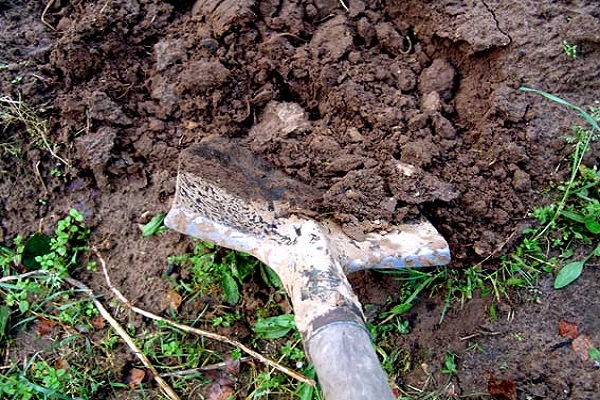
Germinating seeds
Even in the middle lane, zucchini is sown with seeds directly into the ground. They are pre-soaked for several days by placing in a damp cloth and sprinkling with water as it dries. As soon as the sprouts hatch, the seeds are sown in the holes. If the seedling method of cultivation is chosen, then the sowing is carried out in peat pots or tablets. When planting on a garden bed, the plants are not injured, and the roots will not be damaged.

Planting seedlings
A week before planting zucchini in open ground, they begin to harden. Zucchini are brought out for the day, avoiding direct sunlight, and brought back into the room at night. Landing beds are planned in a well-lit place, protected from drafts. It is recommended to follow the rules of crop rotation.
The soil is prepared in advance. As soon as the snow melts, they begin to apply fertilizers. The first step is to scatter 15 g of nitrate on each square meter and loosen the soil.
Sawdust is added to the sandy soil for growing zucchini, and humus and sand are added to the clay soil. When planting plants, the distance between them is not less than 70 cm. Before planting the plants, add a tablespoon of organic matter to each hole. Cloudy weather is chosen for planting zucchini. If this is not possible, then planting is done in the evening.
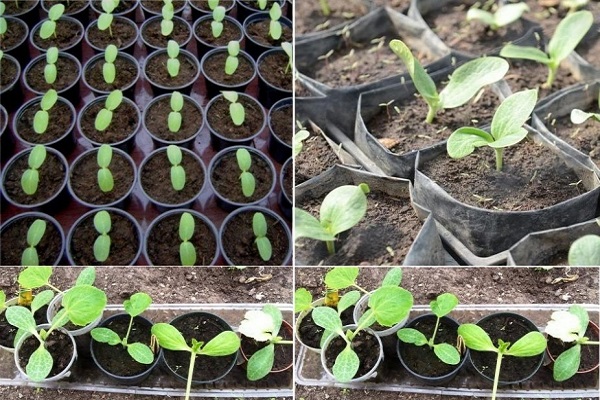
Watering
Watering the zucchini should be moderate and systematic. This technique will prevent fungal diseases from multiplying, and the plants will feel comfortable. Zucchini, like other pumpkin crops, need the temperature of the water they are irrigated with. It should be about 20 ... + 22 ° С. It is best to use a regular garden watering can for this procedure.
Watering zucchini cold water threatens not only with stopping the growth of bushes, but also rotting ovaries. While too warm or even hot water provokes damage to the root system, as a result of which the bush dies.
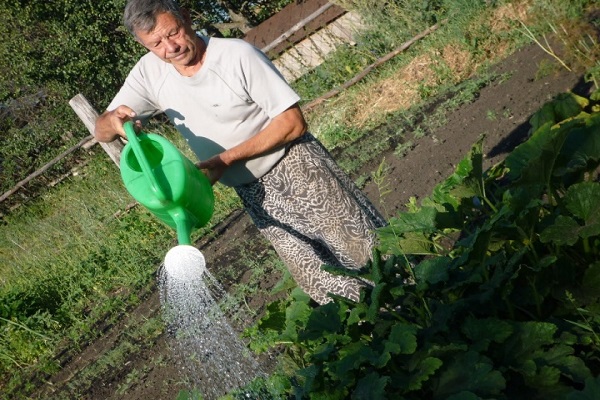
Top dressing
Zucchini are unpretentious plants that do not need numerous feeding. However, they respond gratefully to fertilization during flowering and ovary formation. Mainly complex mineral compositions and organics are introduced. The technique is applied not only root, but also foliar dressing, which has proven itself no less effective.
The next feeding of zucchini is carried out during the period of active fruiting. Zucchini lose a lot of nutrients and strength for the development and formation of fruits, because at this time the bushes need a lot of potassium and phosphorus. There is no need to be zealous with nitrogen-containing fertilizers, which lead to excessive growth of green mass and prevent the formation of peduncles and fruits.

Harvesting and storage
A distinctive feature of zucchini is that they ripen more slowly than white-fruited zucchini, but they tend to last longer without losing taste and marketability. Harvesting is carried out at least 1 time per week, but it all depends on the purpose of growing.Fruits up to 20 cm long are excellent for fresh consumption, and large specimens go for processing and conservation.
Fully ripe zucchini are left to collect seeds. This only applies to non-hybrid varieties. After these zucchini are torn from the bush, they are sent for storage in a well-lit place, and only with the beginning of winter are they cut and seeds are selected.
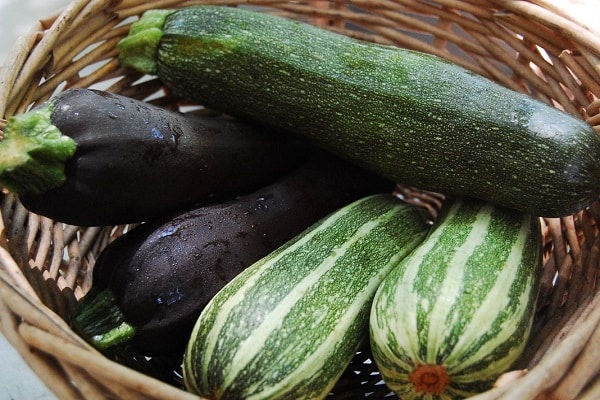
Diseases and pests
Most zucchini varieties exhibit increased resistance to major diseases and pests. The most dangerous diseases for the Pumpkin family are:
- anthracnose;
- ascochitis;
- bacteriosis;
- apical bacteriosis;
- dry apical rot;
- fusarium;
- powdery mildew;
- downy mildew;
- white rot;
- gray rot;
- brown olive spot;
- viral diseases.

Zucchini is most often affected by such pests:
- spider mite;
- melon aphid;
- whitefly;
- sprout fly.
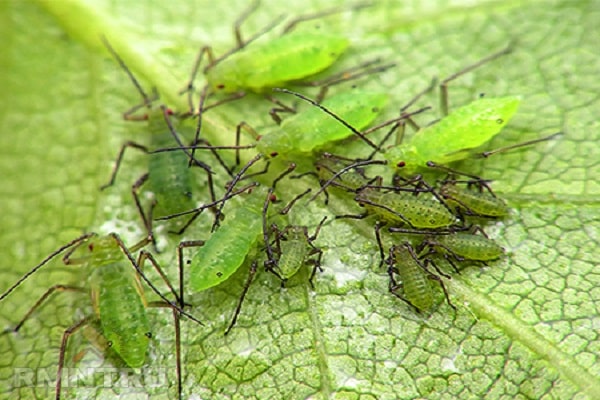
Preventive measures
To prevent the main diseases listed above, it is imperative to follow the rules of crop rotation, not to thicken the planting, correctly use fertilizing and fertilizers, and make moderate watering.
In order to prevent the appearance of pests on the site, it is worthwhile to remove the remnants of vegetation from the beds in a timely manner and carry out deep plowing of the soil. Treatment with folk remedies helps, for example, an aqueous solution of onion gruel with the addition of pepper, ash and soap. If the appearance of pests has already been noticed, then the plantings of zucchini are sprayed with a solution of "Karbofos".
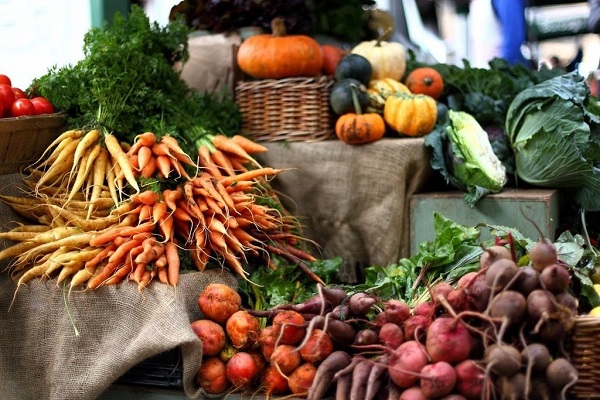
Delicious recipes
A lot of delicious and healthy dishes are prepared from zucchini, which are used both in daily and in dietary nutrition. In the summer season, the price of this product drops significantly, and you can easily diversify your diet.
Roast zucchini
A simple, tasty and economical zucchini-based dish is roast. For cooking, you will need the following ingredients:

- 600 g potatoes;
- 1 medium zucchini;
- 1 small onion;
- 1 chili pepper;
- 2 bay leaves;
- 6 cloves of garlic;
- 3 tbsp. l. tomato paste;
- 1 tsp Sahara;
- 1 pinch of nutmeg
- 1.5 cups chicken stock;
- vegetable oil for frying;
- greens and salt to taste.
The potatoes are peeled, washed, cut into large cubes. The zucchini is washed and also cut into large cubes. Vegetables are fried separately over high heat, after which they are laid out in a saucepan, poured with broth and seasoned with spices. Everything is stewed over medium heat for half an hour. 10 minutes before readiness, fry from onions, hot peppers and garlic is poured. Chopped herbs are added at the very end of cooking, after which the dish is removed from the heat, cooled to room temperature and served.

Zucchini salad with cucumbers
To prepare an original zucchini salad, you will need:
- onions (salad varieties) - 1 medium head;
- young zucchini - 1 pc.;
- refined sunflower oil - 2 tbsp. l .;
- fresh young cucumbers - 2 small;
- boiled chicken egg - 2 pcs.;
- parsley to taste;
- pepper, table salt - to taste.
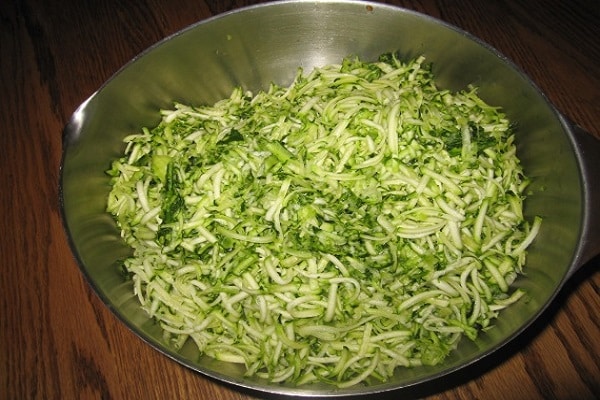
Cooking technology
Wash the zucchini thoroughly and grate on a coarse grater, peel and cut the onion into small cubes. Heat a frying pan with vegetable oil, add onion and fry lightly. Put the zucchini here and fry for 5-7 minutes, until the moisture completely evaporates. Cut eggs and cucumbers (pre-washed) into strips. Pour the fried vegetables into a salad bowl and let cool well. Pour eggs and cucumber there, season with salt and pepper to taste, mix thoroughly. Top with chopped parsley. The dish is completely ready to eat.
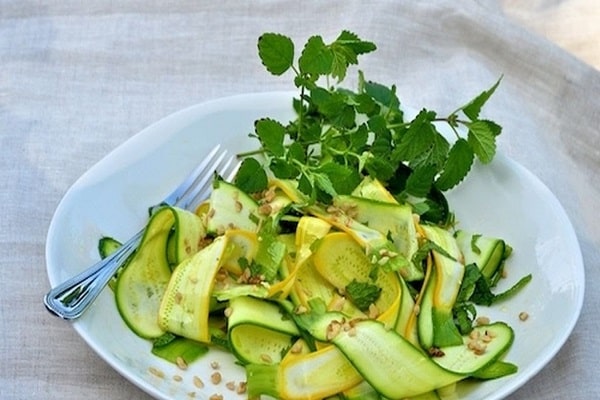
Squash caviar
Zucchini caviar, in particular from zucchini, has become almost a national dish. There are a huge number of recipes for its preparation, one of which is presented below.
Ingredients:
- medium carrots - 2 pcs.;
- red tomatoes - 5 pcs.;
- onion - 2 heads;
- zucchini - 2 pcs. (weighing about 350 g);
- parsley - to taste, a few branches;
- salt, black pepper and chili to taste.
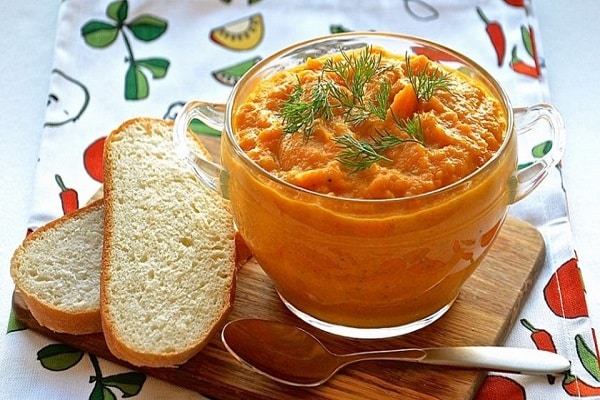
Cooking technology
Wash the zucchini, remove the seeds if necessary (if they are already hard), cut into medium cubes. Wash carrots, peel, grate on a medium grater. Peel the onion and cut into small cubes. Mix all the vegetables and pour into a saucepan with thick walls (a cauldron is suitable). Remove the peel from the tomatoes and grind in a blender or with a meat grinder, then pour into a saucepan too. Put on low heat and cover with a lid.
The zucchini caviar is stewed for 40-50 minutes so that all the liquid evaporates. Mix vegetables from time to time. At the end of cooking, cooked spices and herbs are added to the squash caviar. The dish is ready to eat, but if desired, the vegetables can be chopped with a blender until they are mushy.
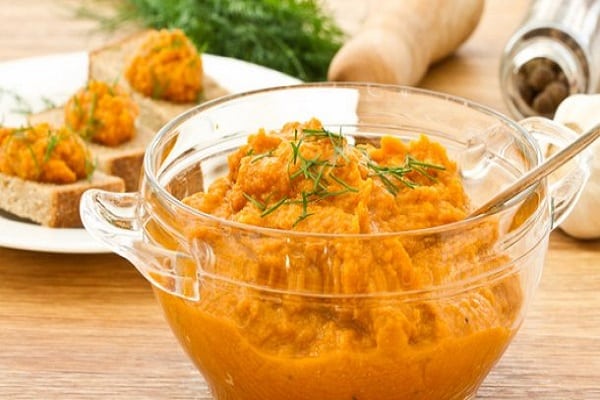
Stuffed zucchini
Stuffing zucchini is not only convenient and quick, but also delicious. That is why a lot of different recipes and variations have appeared. One of the best is presented below.
Ingredients:
- zucchini zucchini - 4 pcs. (small);
- tomatoes - 3 pcs.;
- onion - half a head or 1 small;
- minced meat from any meat - 0.5 kg;
- butter to taste;
- hard cheese - 200 g;
- salt, pepper, herbs - to taste.
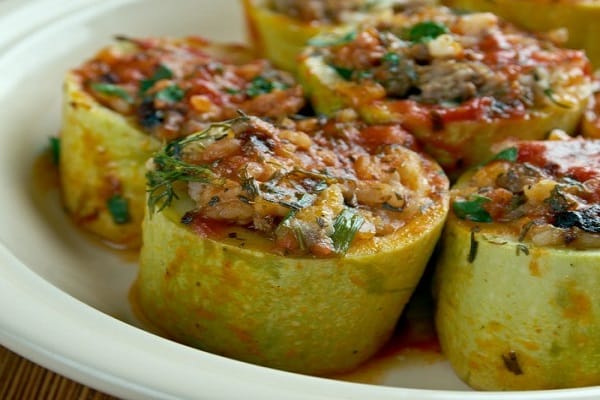
Cooking technology
Wash the zucchini, cut it into 2 pieces and remove the middle. Put butter in a frying pan, heat and fry onions, minced meat, zucchini centers and tomatoes on it. At the end of frying, add spices and herbs.
Grease a baking sheet with butter and place the zucchini halves on it, and then fill them with fried minced meat with vegetables. Sprinkle everything on top with plenty of grated hard cheese and put in an oven preheated to 200-220 ° C for 40 minutes. The finished zucchini dish is taken out of the oven and served to the table.
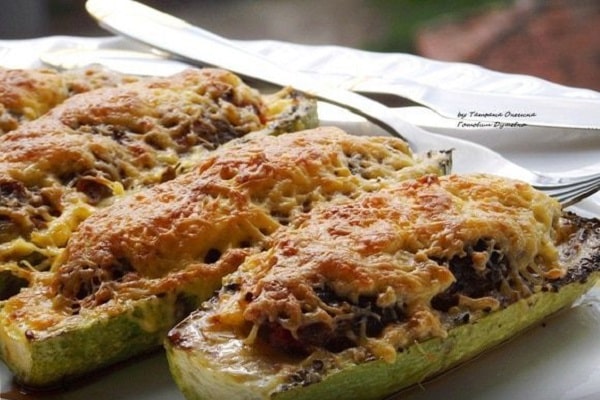
How zucchini differ from zucchini
Inexperienced gardeners claim that zucchini are the same zucchini. However, it is not. First of all, zucchini are able to bear fruit continuously, they are more early ripening in comparison with ordinary zucchini, and the fruits are distinguished by the most delicate taste. The external characteristics of vegetables will also be different.
The zucchini bush is more compact, takes up a smaller area, does not curl. This makes it possible to harvest more crops from a garden of the same size. Zucchini are suitable for long-term storage, and at the same time do not lose their taste and marketability, they can be transported over long distances.
